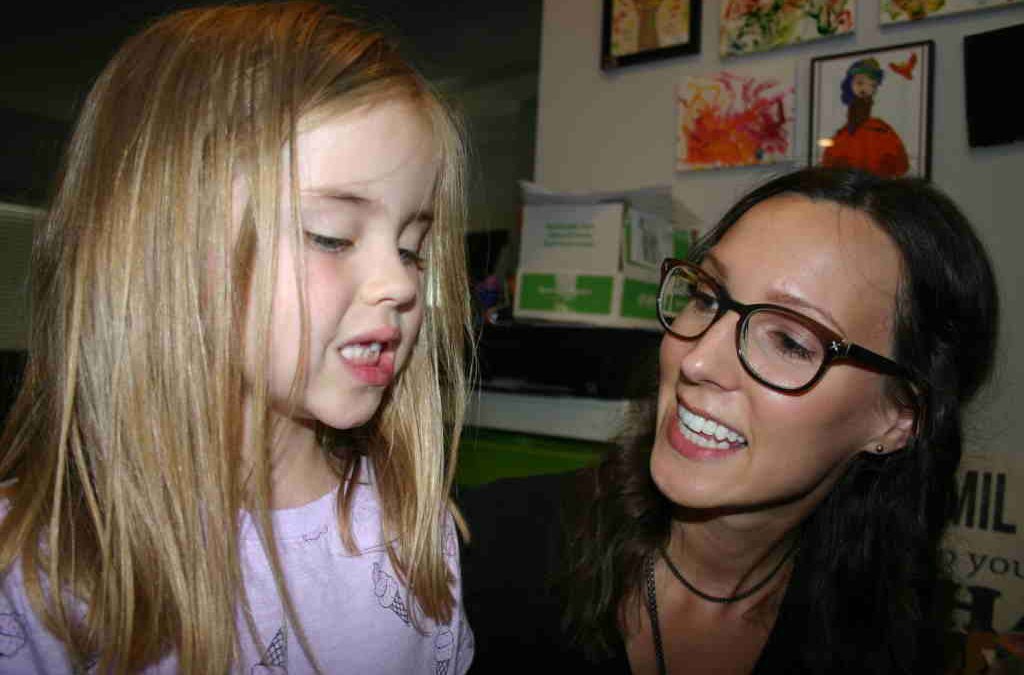I had a conversation with a parent the other day. They were curious to know why I was so interested in the pronoun errors of their 4-year-old daughter.
We got into a discussion about how children’s brains acquire speech, language, and literacy skills – and what predictors, markers, and red flags we may look for.
The human brain is a wonderful pattern-recognition machine. As luck would have it, the organization of our language is also highly structured.
Typically developing children learn through cumulative exposure to speech and language. The brain begins to recognize patterns and formulates “rules” or expectancies based around probabilities. This can be referred to as statistical learning.
For example, children learn that you can start a word with an “scr” blend, as in the word scratch, but an “scl” or “skl” blend is not allowed. There is a positional constraint that governs the sound patterning in this case. Similarly, children learn that the “ng” sound can occur at the end of a syllable, as in “singing” but it cannot occur at the start of a syllable. For this reason, we do not have any words in English that begin with the sound “ng”.
You may not have ever heard these “rules” before – but I’m guessing deep down you knew them. Similarly, for the most part, no one has to teach children these rules – they simply learn it from exposure to the language. You can thank the pattern-recognition machine that is the human brain, and its adeptness at statistical learning.
Back to pronouns.  Our grammar system is similarly patterned and governed by expectancies. There are linguistic constraints that dictate which pronoun to use. Pronouns are linguistically complex, as they are governed by number, person, gender, and case.
Our grammar system is similarly patterned and governed by expectancies. There are linguistic constraints that dictate which pronoun to use. Pronouns are linguistically complex, as they are governed by number, person, gender, and case.
In the subject case (the person doing the action is the subject), we have a list of subjective pronouns including I, you, he, she, it, we, and they.
We then must check in around person/perspective. A first-person subjective pronoun would be “I”. 2nd person is “you“, and 3rd-person would be he, she, or it.
We must also check in on number. 1st person singular is “I”, however if there is more than one of us, now we need to say “we”. Confused yet?
Of course, if it is a possessive 1st person pronoun, we say “me”.
We can further distinguish between gender with pronouns. We may talk about he, him, his or she, her, hers.
Number, person, gender, and case are linguistic constraints that dictate which pronoun to use. As you can see by our fly-by overview, it is complex!! And yet most students do not need to be TAUGHT this – rather, they learn it just from exposure. The brain fills in the “rules”.
Pronoun use can tell us how organized a brain is around language information. How easily are expectancies being recognized and acquired? Where is this process not keeping up with age-matched peers? When its not, we can see that the brain is not processing language accurately or efficiently – and it is likely time to go in and do some practise, some awareness training, some explicit teaching, and possible some drill-based therapy.
A brain that is not acquiring sound and/or language expectancies from exposure is significantly at risk for learning delays, and ESPECIALLY so for literacy acquisition.
Our reading system with letter-sound association is a very complex system of expectancies. Statistical learning is NECESSARY for learning to crack the code of how letters represent the sounds of our speech and words of our language.
If you have a child who is delayed in sound processing or is behind in grammar acquisition, I would highly recommend that you complete assessment with a Speech-Language Pathologist.
If your child is having difficulty learning to identify and label letters, OR to label the sound that corresponds to letters, I would also recommend assessment.
If your child attempts to memorize words, and has shown that they cannot “decode” or sound words out, it is very likely that they do not have a brain that is adept at pattern recognition and statistical learning. These children need to be taught differently – they need to be taught the patterns that are so far eluding them!!
In any of the above cases, please note – continued exposure and more practise is not likely to make a difference. The brain is not recognizing patterns, so even with further exposure, the brain STILL won’t recognize the patterns. Patterns must be TAUGHT and practised. The recommendation to “read more with your child” is not going to cut it.
Now you know a little bit of what to watch for in speech, language, and literacy development; and when you see delays, you can begin to understand WHY that is happening. You also know that your child will need an instructional plan beyond exposure and practise. If something in here sounds like your child, I invite you to act and request an assessment!

